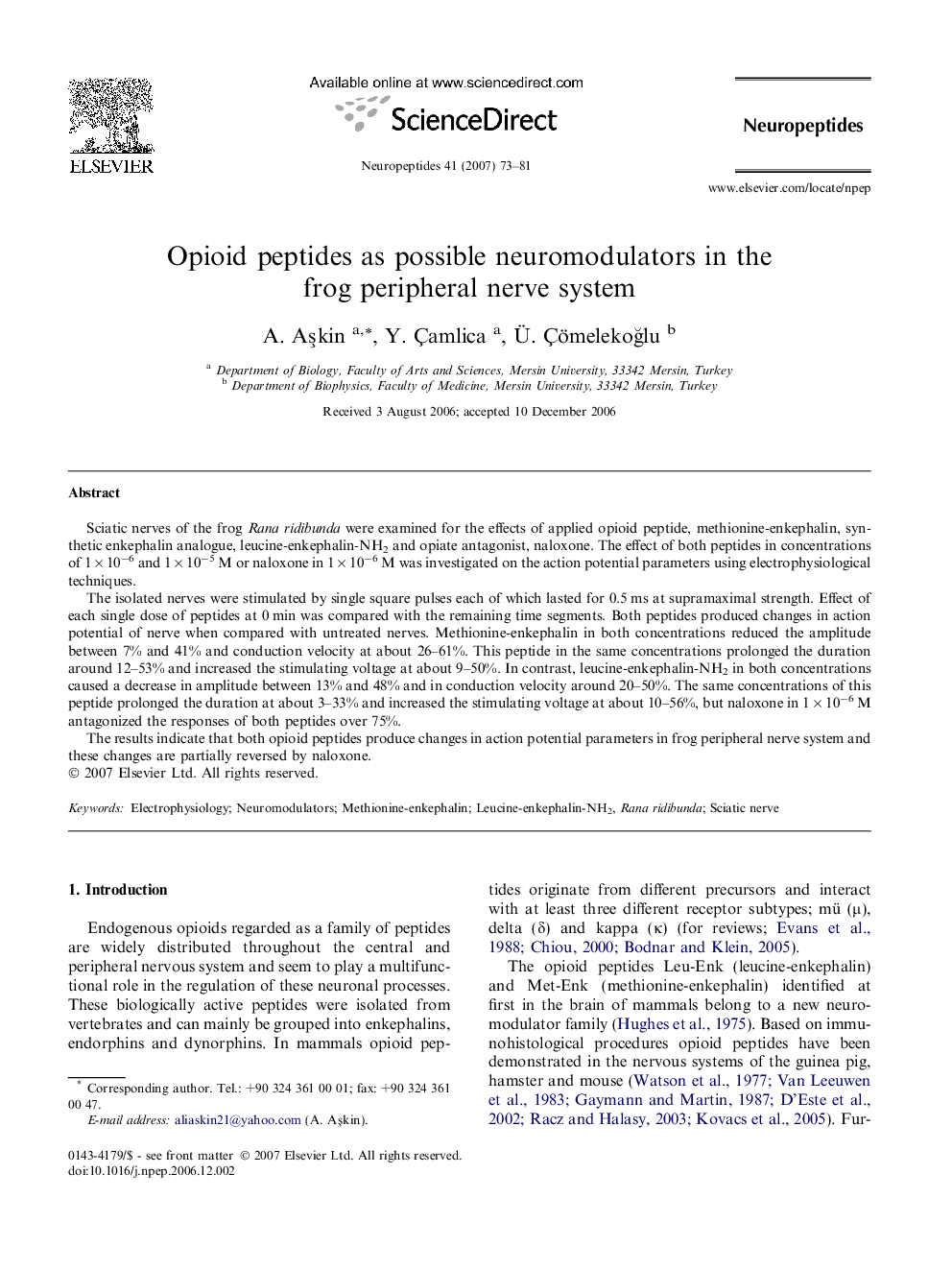| Article ID | Journal | Published Year | Pages | File Type |
|---|---|---|---|---|
| 2808677 | Neuropeptides | 2007 | 9 Pages |
Sciatic nerves of the frog Rana ridibunda were examined for the effects of applied opioid peptide, methionine-enkephalin, synthetic enkephalin analogue, leucine-enkephalin-NH2 and opiate antagonist, naloxone. The effect of both peptides in concentrations of 1 × 10−6 and 1 × 10−5 M or naloxone in 1 × 10−6 M was investigated on the action potential parameters using electrophysiological techniques.The isolated nerves were stimulated by single square pulses each of which lasted for 0.5 ms at supramaximal strength. Effect of each single dose of peptides at 0 min was compared with the remaining time segments. Both peptides produced changes in action potential of nerve when compared with untreated nerves. Methionine-enkephalin in both concentrations reduced the amplitude between 7% and 41% and conduction velocity at about 26–61%. This peptide in the same concentrations prolonged the duration around 12–53% and increased the stimulating voltage at about 9–50%. In contrast, leucine-enkephalin-NH2 in both concentrations caused a decrease in amplitude between 13% and 48% and in conduction velocity around 20–50%. The same concentrations of this peptide prolonged the duration at about 3–33% and increased the stimulating voltage at about 10–56%, but naloxone in 1 × 10−6 M antagonized the responses of both peptides over 75%.The results indicate that both opioid peptides produce changes in action potential parameters in frog peripheral nerve system and these changes are partially reversed by naloxone.
